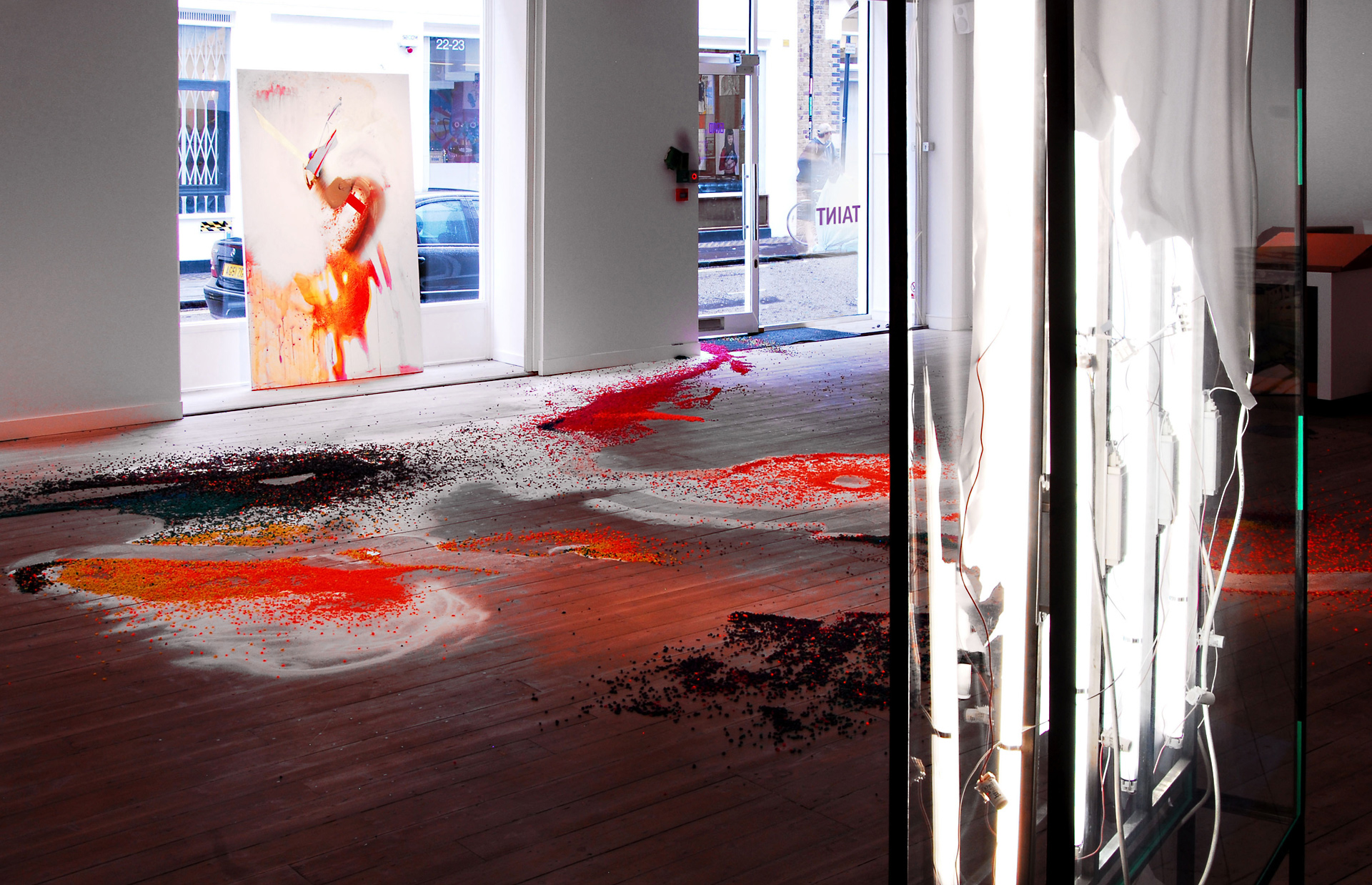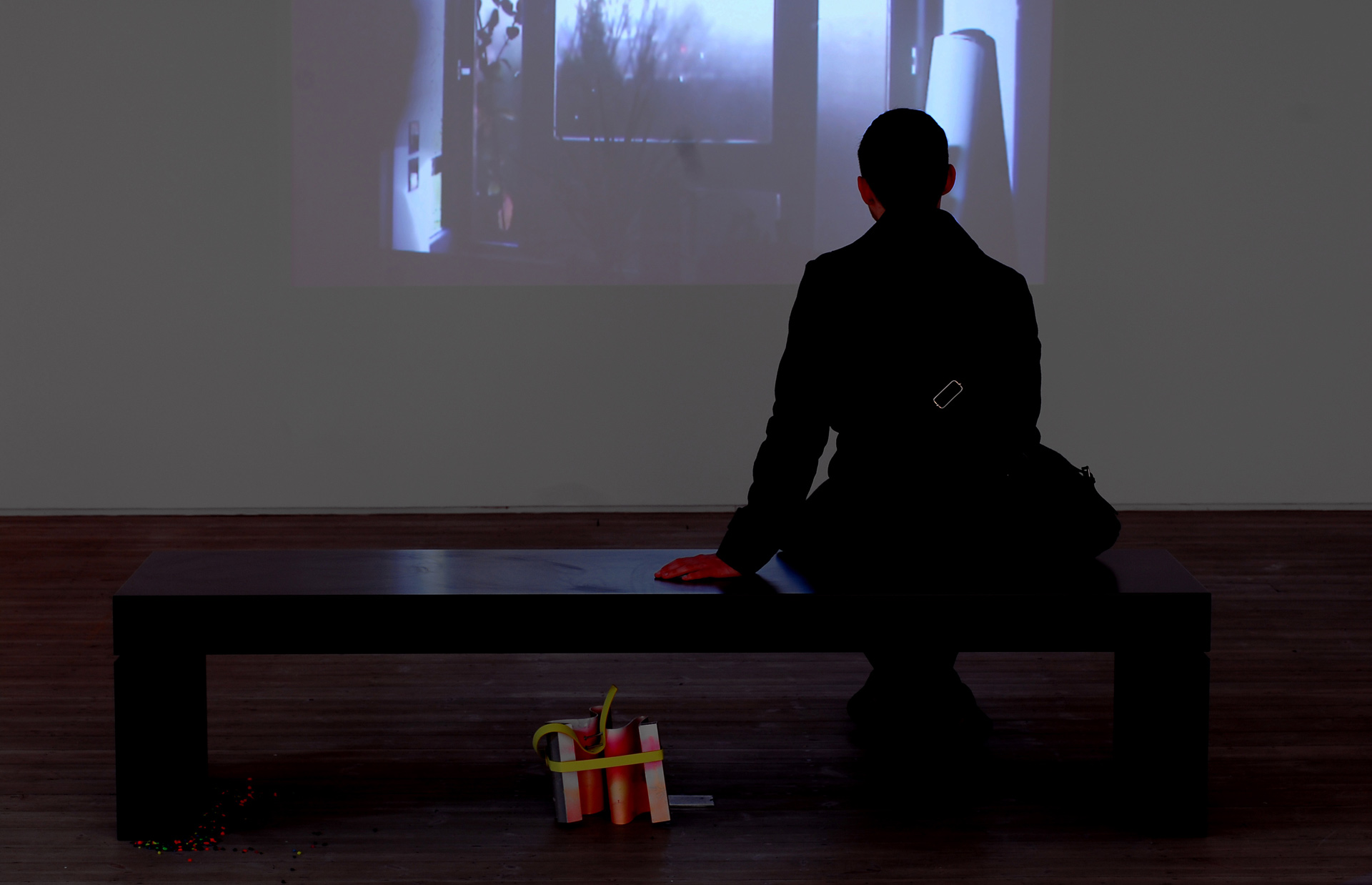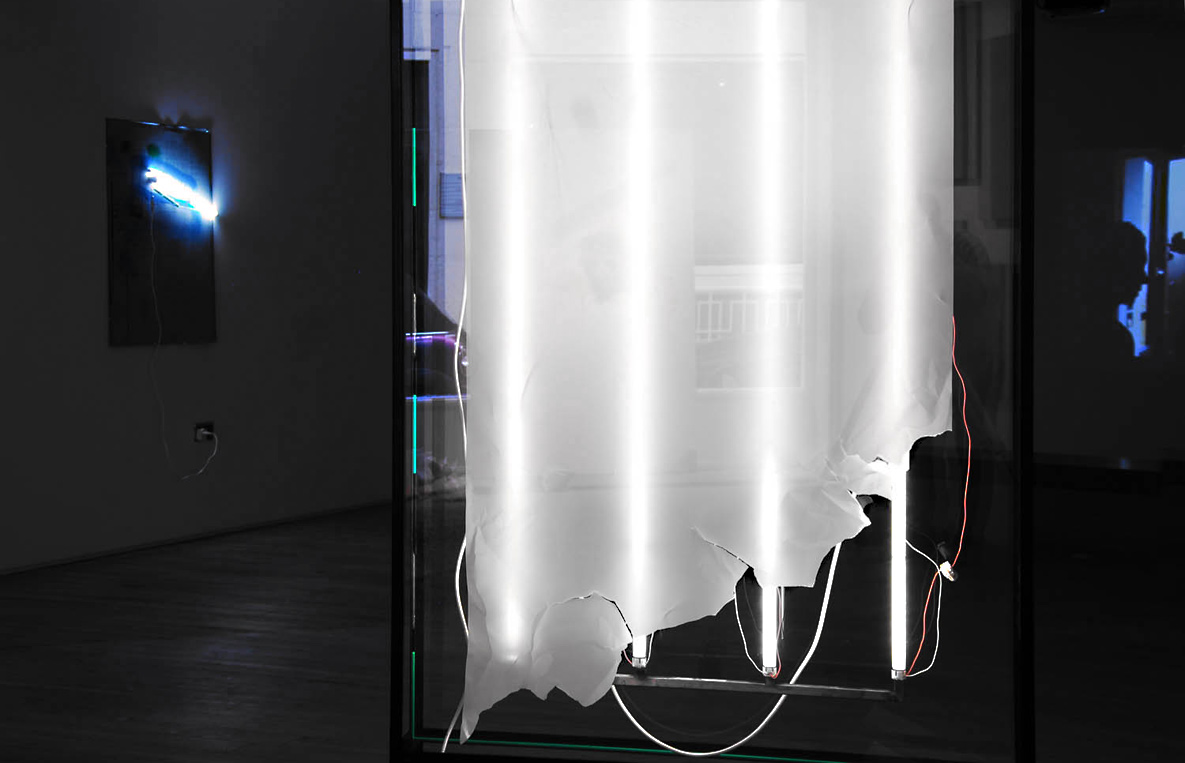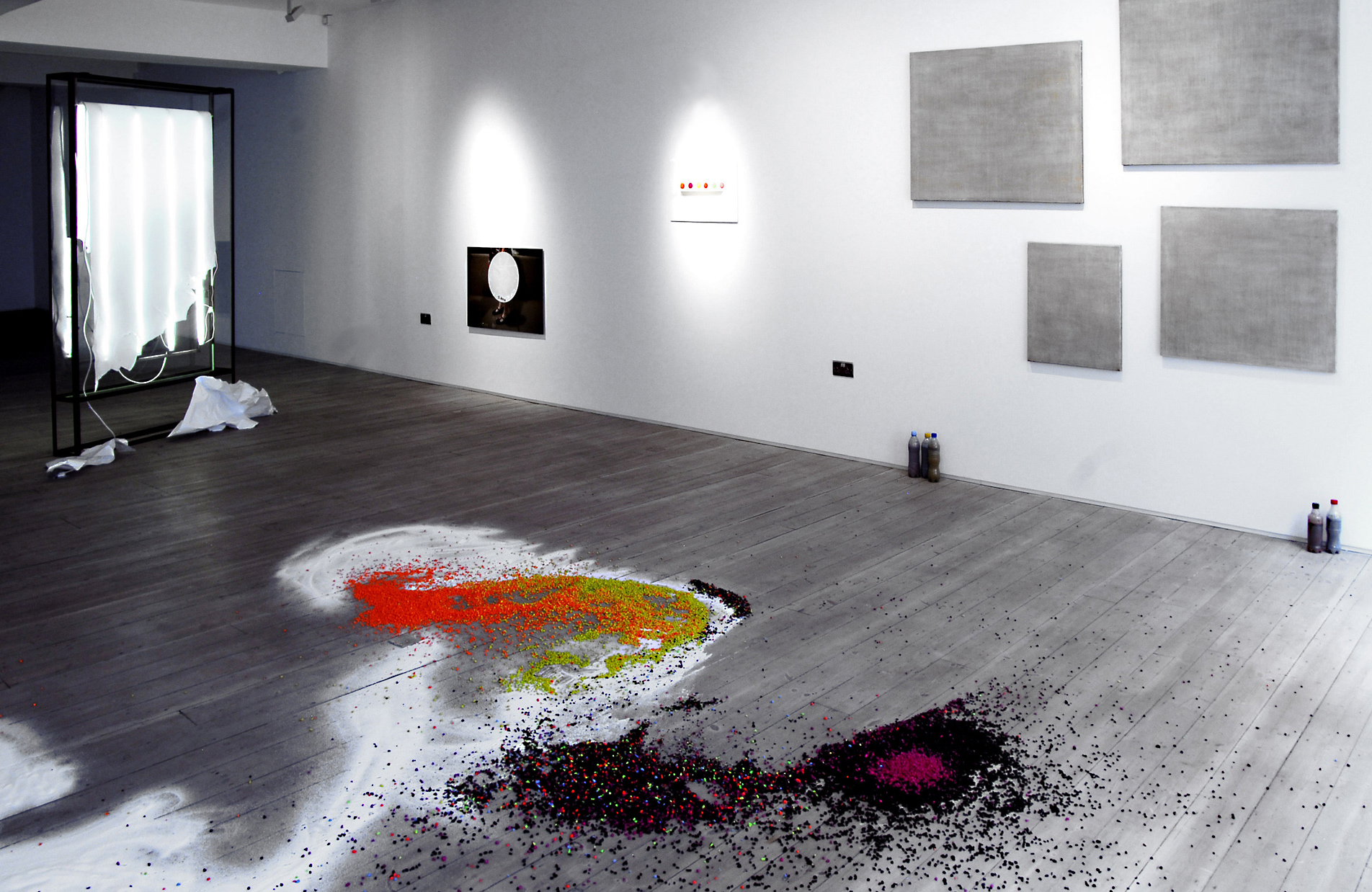Taint
08 April — 03 May 2014
FREE ENTRY
Curated by HANNAH CAMPION and KATYA SIVERS
Photographs by Henry Milner
The ten artists presented in Taint collectively provide a snapshot of several recent developments in contemporary painting and photography-related work in Britain and Russia. A number of the show’s contributors are fairly recent graduates from art schools in either the UK or Russia, whilst others have already been exhibiting for a number of years. Whatever their specific background or degree of experience, these artists work to a common condition, that of being strongly influenced – even if implicitly or inadvertently – by the legacy and penetrating power of Conceptual art, whilst nonetheless sharing a desire to continue to produce paintings or painting-related work. The traditional medium of painting, being thus filtered, modified, or, perhaps tainted by Conceptualism, has not, as various commentators wrongly predicted, disappeared or become redundant. Rather, painting was arguably given a new lease of life as a result of the widespread dissemination of the strategies of self-investigation that so typically characterise Conceptual art. In the most interesting and revealing instances of post-conceptual painting - the work of Gerhard Richter would be a case in point – the physical and critical result or implications is clearly an expansion of the possibilities of painting, a transformation affecting both the medium of paint itself and also where the frame or boundary of the ‘painting’ begin and end. What exactly ‘painting’ is in relation to other resources of expression, including those of the relatively new mediums of image-making such as video and computer-generated art, is hard to define, but all of the artists in Taint maintain a prominent connection with this perhaps oldest of all artistic forms.
Although two of the British artists in the exhibition, Adam Burns and Hannah Campion, hold a deep interest in the use of colour within their respective works, it cannot be convincingly suggested that colour is a prime concern in British art but not so prominent in that of Russia, even though at first sight such rigid cultural divisions appear to hold. Burns’ sharply delineated bright diamond forms are curiously resonant of certain aspects of the early twentieth-century Russian movement known as Rayonism, and other cross-cultural allusions and connections might be mapped out at some length. Jackson Pollock famously referred to the project of modern art as one of international proportions, remarking on the absurdity of a belief in nationalism in art. More specifically, the contributors to Taint might be seen as both aware of international artistic issues and debates whilst working in relation to particular cultural (and individual) perspectives. Burns’ systematic approach to his use of colour and composition is a means of generating what is often an unpredictable outcome, the careful following of strictures being a way of allowing things to occur in a semi-controlled way. A deliberate acceptance of controlled randomness is also apparent in the work of Anton Kuznetsov, who employs as source material photographs which have been discarded and, sometimes, damaged or spoiled. In such cases the element of despoliation provides a random component right at the start, from which Kuznetsov constructs a controlled image in which the external interruption becomes a central aspect of the work.
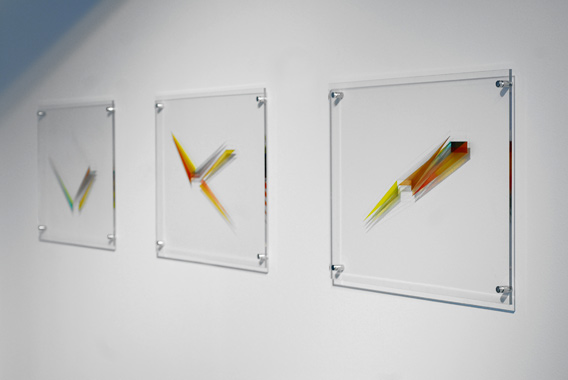
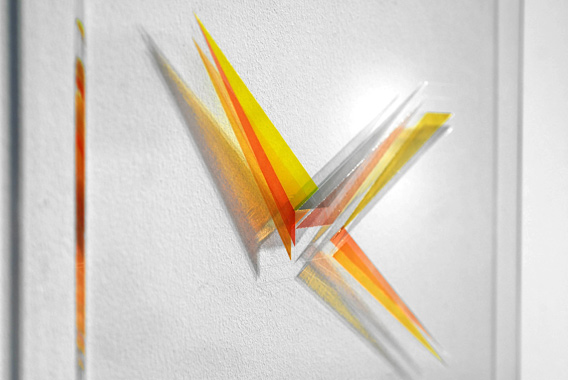
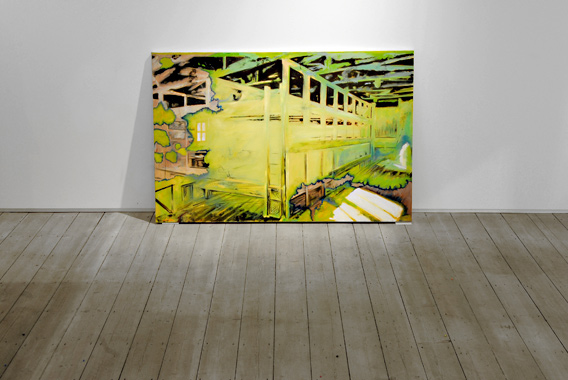
Adam Burn
503:117:706 | 302:116:113 | 218:502:601
Oil and impasto on acrylic
40.5 × 61 cm
Courtesy the artist and Vane Contemporary Art
Adam Burn
302:116:113, 2011
Detail
40.5 × 61 cm
Courtesy the artist and Vane Contemporary Art
Anton Kuznetsov
Plank-bed, 2013
From Bad Print series
Oil on canvas
90 × 139 cm
Courtesy the artist and GRAD
A dialogue between ‘the real’ and the consciously organised artwork can also be seen in the work of Katya Sivers, who deploys fragile materials such as wax, glass, plastics and cloth to construct micro-installations that may be regarded as analogues for the fragility of human society itself – something particularly apt at the present moment as regards relations between Russia and its immediate neighbours. These soft, loose forms are combined with clearly delineated edges, an interplay also suggesting the mutual dependency of diverse constituents within the social and artistic whole.
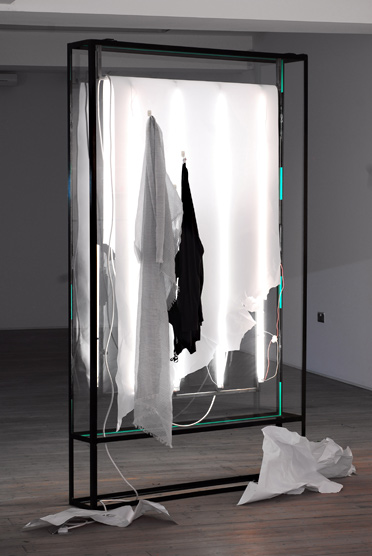
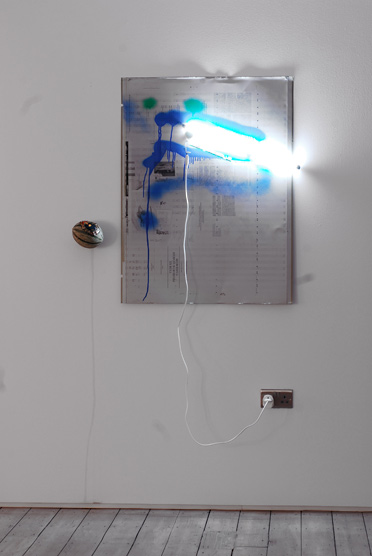
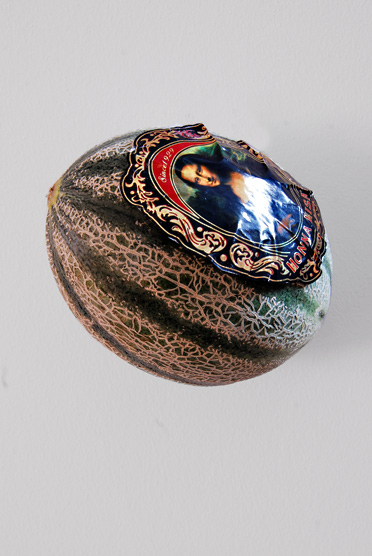
Katya Sivers
Towards Victoria or Sloane Square, 2013
Metal frame, lamps, paper, clothes
210 × 130 × 20 cm
Courtesy the Artist and GRAD
Katya Sivers
State Tretyakov Gallery. Painting of the Second Half of the 20th Century, 2014
Metal printing plate used for Tretyakov Gallery catalogue, paint, luminous lamp, melon
Various dimensions
Courtesy the artist and GRAD
Katya Sivers
State Tretyakov Gallery. Painting of the Second Half of the 20th Century, 2014
Detail
Metal printing plate used for Tretyakov Gallery catalogue, paint, luminous lamp, melon
Various dimensions
Courtesy the artist and GRAD
Such an expansion (or negation) of the fixed frame is also evident in Hannah Campion’s colourful installations, in which metals, plastics, wood, paint and other elements are brought together into flexible, reflexive arrangements which seem to suggest that a once coherent, conventional painting has torn itself apart. In Campion’s work the location in which the work is placed becomes part of the overall theatre of physical exchange.
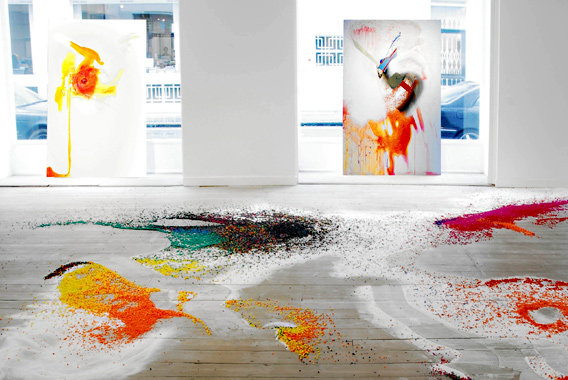
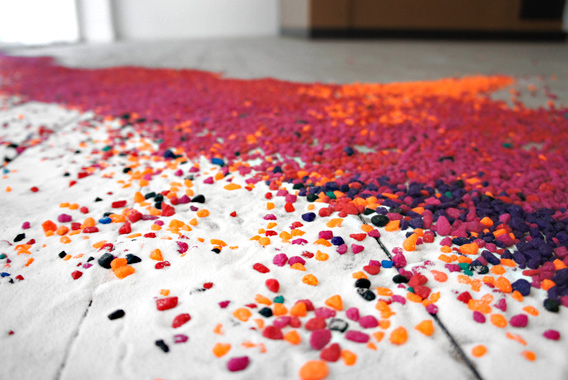
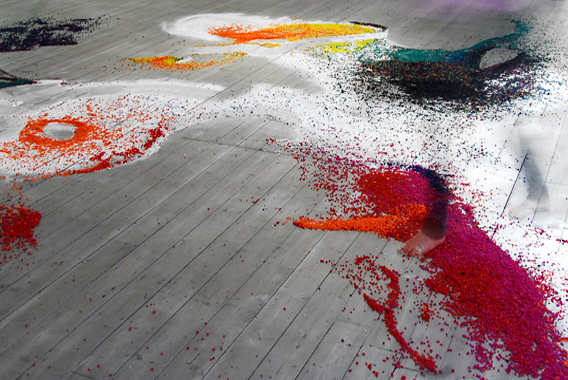
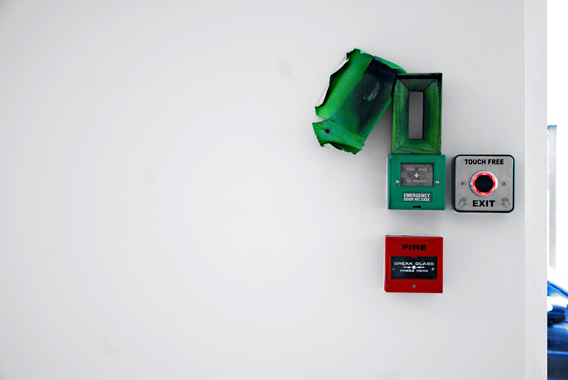
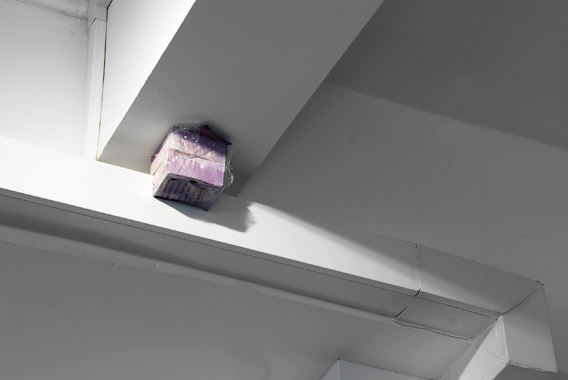
Hannah Campion
Pool, 2014
Wisp, 2014
Paint, brown tape and masking tape on aluminum
200 × 125 cm
Painting, 2014
Aquatic gravel
Various dimensions
All works courtesy the artist and GRAD
Hannah Campion
Painting, 2014
Aquatic gravel
Various dimensions
Courtesy the artist and GRAD
Hannah Campion
Detail
Aquatic gravel
Various dimensions
Courtesy the artist and GRAD
Hannah Campion
Green Goblin, 2013
Paint and canvas stretcher
15 × 15 cm
Courtesy the artist and GRAD
Hannah Campion
Block, 2013
Paint and canvas stretcher
15 × 15 cm
Courtesy the artist and GRAD
Lisa Plavinsky occupies a number of different roles, working as a critic and curator whilst, as an artist, she utilises a number of different media, including painting, photography and sound. Part of her work takes up certain conceptual concerns through the use of photographs; as a painter she is especially interested in colour, its removal from the surface of the work as well as its overlays and combinations. If she sometimes provides, in her paintings, a kind of excess or heightened juxtaposition of multiple strands of colour, the opposite might be claimed for Ivan Novikov, whose washes and monochromatic colour planes aim for a reductive palette that is nonetheless saturated and intense. As with several other artists in Taint there is, in Novikov’s practice, a deconstructive or, perhaps more accurately, an expansive aspect to the work, the creation, as it were from the closed field of painting, of installations, the distinct elements of which surround the viewer, implying that he or she may indeed become an actual part of the work.
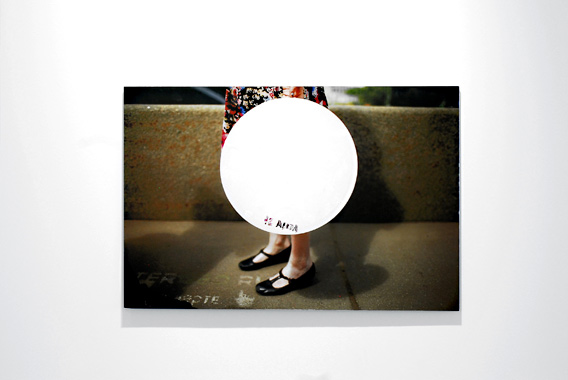
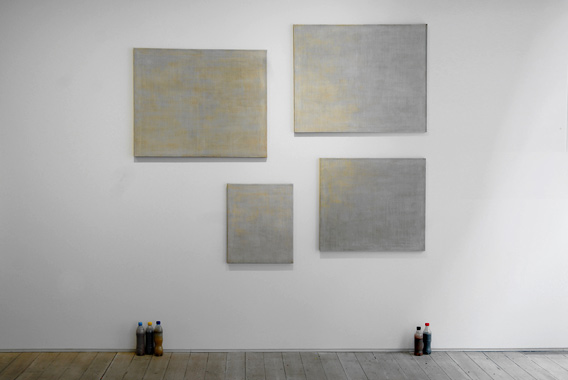
Lisa Plavinsky
White Plener, 2012
Photographic document
40 × 60 cm
Courtesy the artist and GRAD
Ivan Novikov
Untitled, 2014
Four canvases
100 × 800 cm (×2),
70 × 80 cm, 50 × 60 cm,
plastic
Courtesy the artist and GRAD
In erasing the distinction, as far as this is possible, between ideas and their materialisation, Jacopo Trabona obtains and rearranges found functional objects, taking, for example, the separate parts of a piece of home-assembly furniture and putting them together in ways not prescribed by the accompanying instructions. This might be considered a somewhat literal, but nevertheless engaging reinscription of the real, a disruption of expectations in which a useful object begins to function as a composition in its own right. Claire Undy’s photographs also present the viewer with interpretative problems that insist upon a comparison between what is expected or received, and what a thing actually is or is not. Her provocatively titled ‘Six plasticine balls, three of which are sculptures’ makes one wonder about how truthful a photographic representation might actually be, and whether any of the balls in the photograph are in any meaningful sense different from their neighbours. The title itself carries much of the work’s weight or meaning, turning the photograph into a kind of conundrum or visual pun.
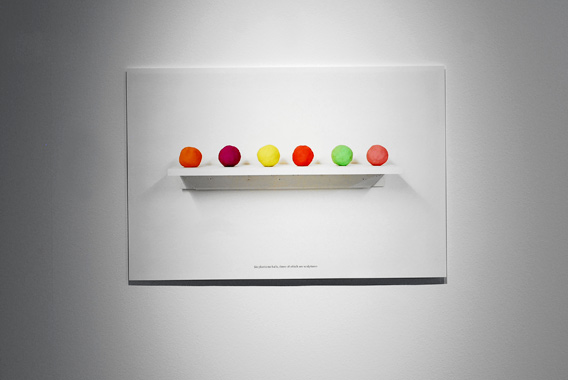
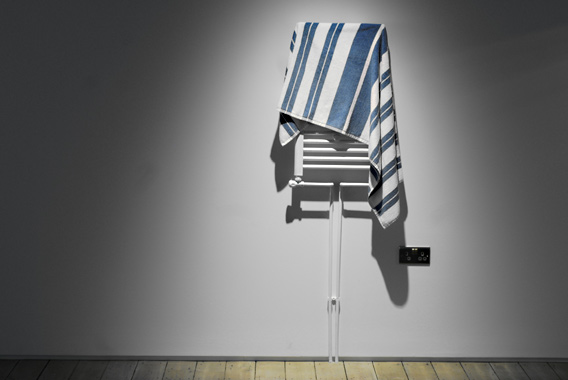
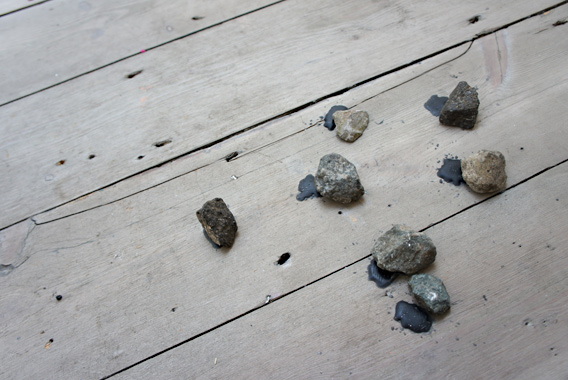
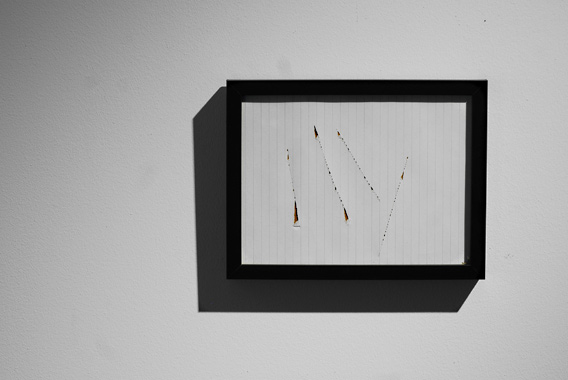
Claire Undy
Six Plasticine Balls, Three of Which are Sculptures, 2013
Giclée print
41 × 58 cm
Courtesy the artist and GRAD
Jacopo Trabona
Towel and Radiator, 2014
Towel radiator, towel, plastic pipes, socket
40 × 150 cm
Courtesy the artist and GRAD
Jacopo Trabona
Untitled, 2011
21 × 29.7 cm
(unframed)
Courtesy the artist
Jacopo Trabona
Untitled Collisions, 2013
Found stones, black wax shadows
Variable dimensions
Courtesy the artist and GRAD
Ekaterina Lupanova has in the past produced an aural audio diary comprised of recordings of everyday sounds. In foregrounding a deliberately non-visual record of the tracks and traces of mundane actions, the prominence given to the visual as a means of representing ‘reality’ is put, as it were, in competition with other modes of depiction, so as to throw greater attention onto the established hierarchy of the human senses. This suggests that conventional notions of the real are to a large extent culturally determined, and as such may be ripe for critical inspection. Such a sceptical perspective is also an important feature of Heather Ross’ video works, in which standard frameworks of televisual depiction are engagingly scrambled, with what we usually accept as ‘realism’ being effectively knocked off course by Ross’ use of multiple overlays, repetition, and ambiguous renditions of foreground and background, centre and margin. This layering of transparent ‘scenes’ implies a painterly approach to image-making, a process of building up a suggestive but cleverly deceptive field of depth.
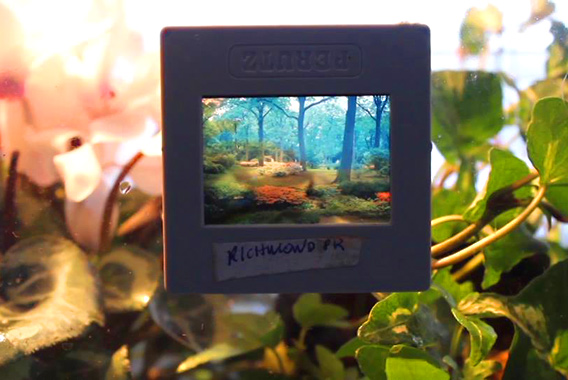
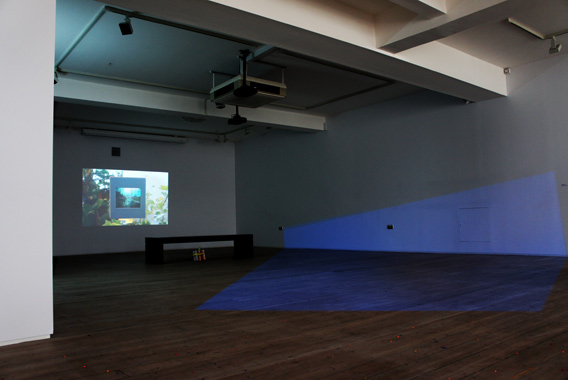
Jacopo Trabona
Untitled Collisions, 2013
Found stones, black wax shadows
Variable dimensions
Courtesy the artist and GRAD
Ekaterina Lupanova
Full Screen, Blue, 2012
Digital video projection
Courtesy the artist and GRAD
Whenever ‘painting’ in the standard sense of that expression is not the most prevalent feature of Taint, its ghostly presence is yet everywhere in evidence, a common connection across the vast territory touched upon in the present exhibition.
Peter Suchin
TAINT EVENTS
Taking TAINT’s theme of contact and collaboration as inspiration, GRAD opened its doors to visitors with a professional or personal interest in making, curating and thinking about art. New works were commissioned, the future of art was dissected and the boundaries of painting were well and truly pushed.
CHILDREN’S WORKSHOP
03 May 2014
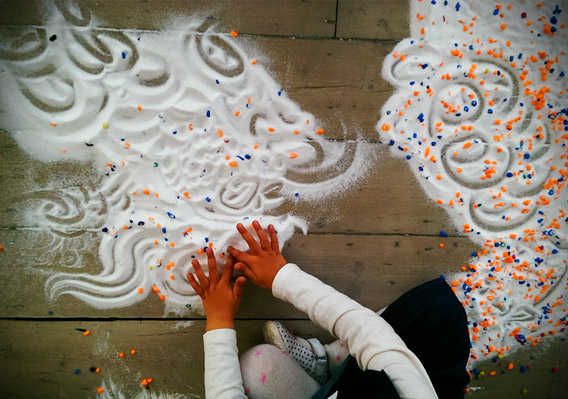

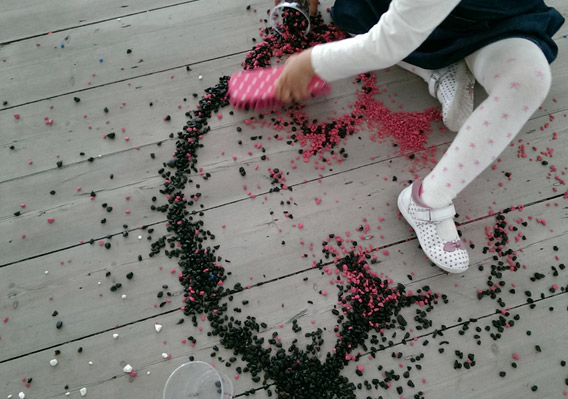
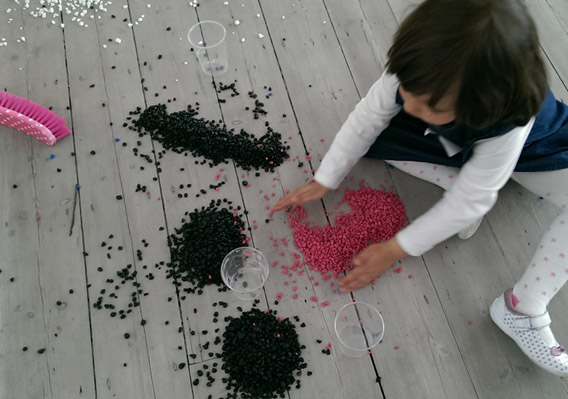
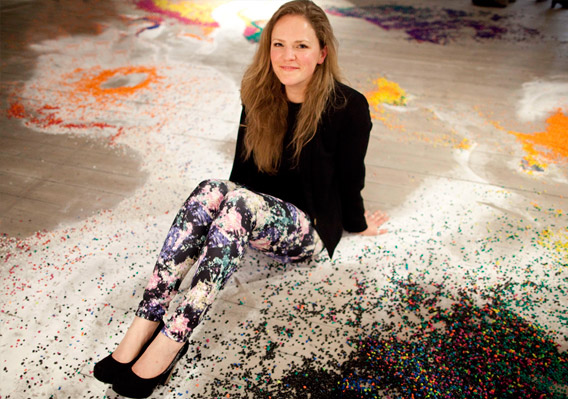
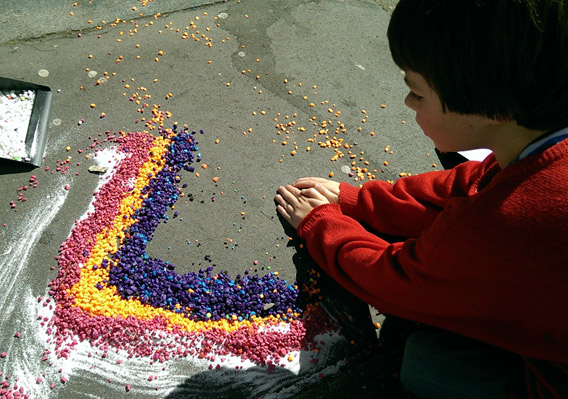
GRAD worked with a rabble of even younger creatives to explore form and colour through ‘floor painting’ with TAINT curator Hannah Campion. Artistic mayhem ensued…
TAINT: POINTS OF CONTACT
24 April 2014
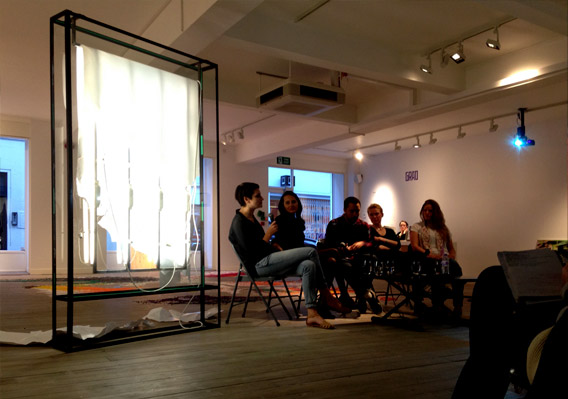
In April 2014 GRAD brought together young creatives and industry professionals for a night of networking and debate. Broadcaster, curator and critic Morgan Quaintance took to the chair, whilst Sotheby’s Curator Suad Garayeva and artists Hannah Campion, Katya Sivers and Elena Popova tackled the big issues facing the art world. Listen to our lively podcast here.
OPENING NIGHT
07 April 2014
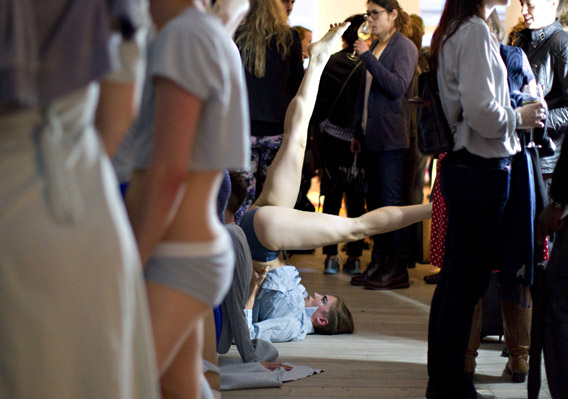
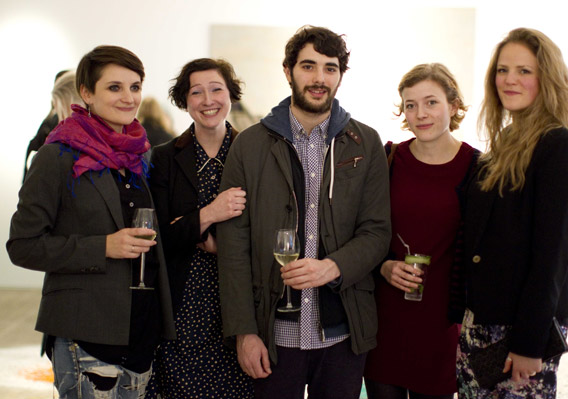
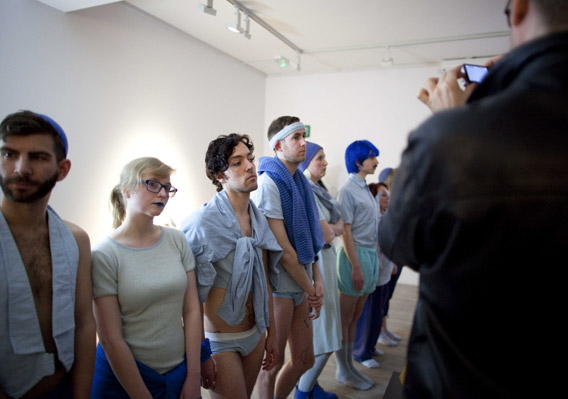
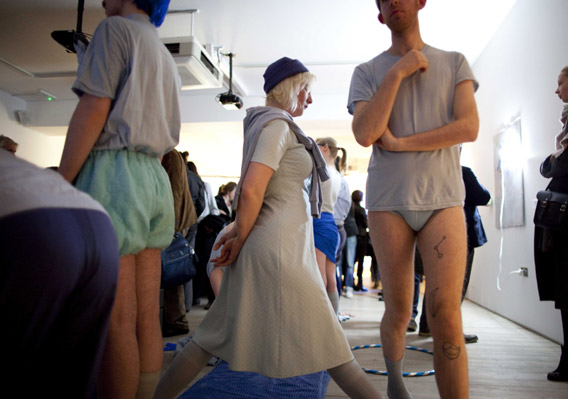
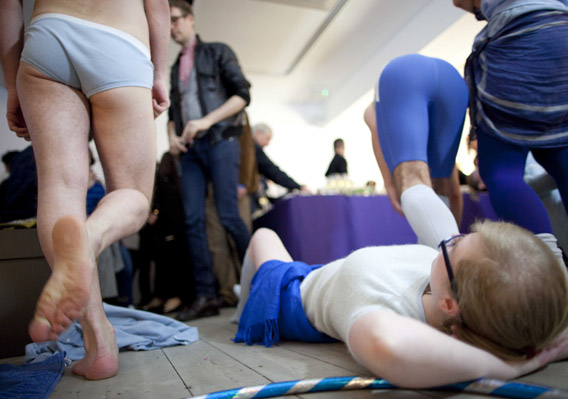
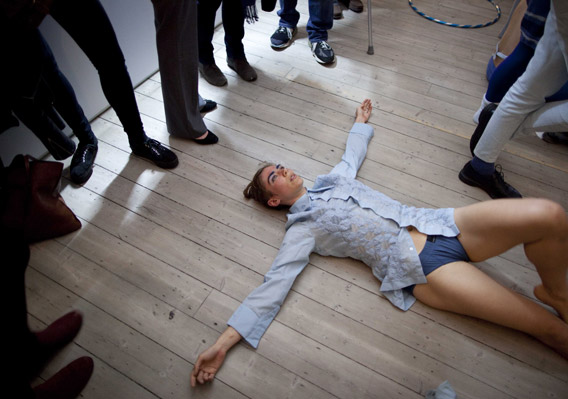
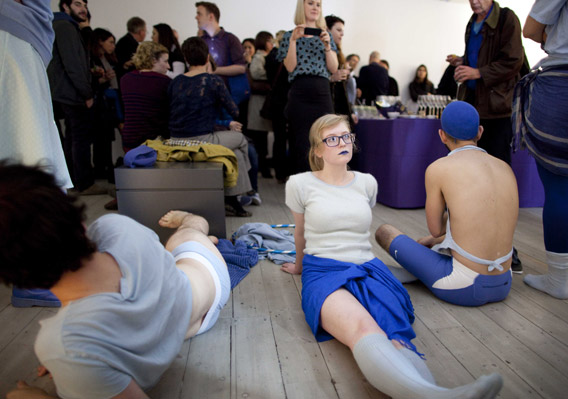
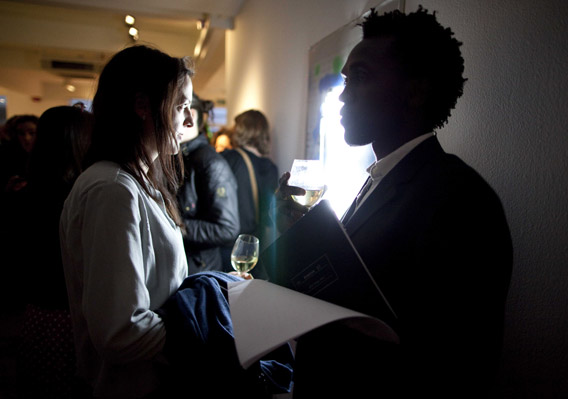
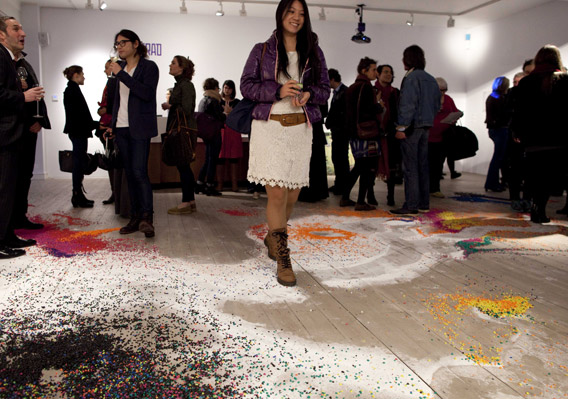
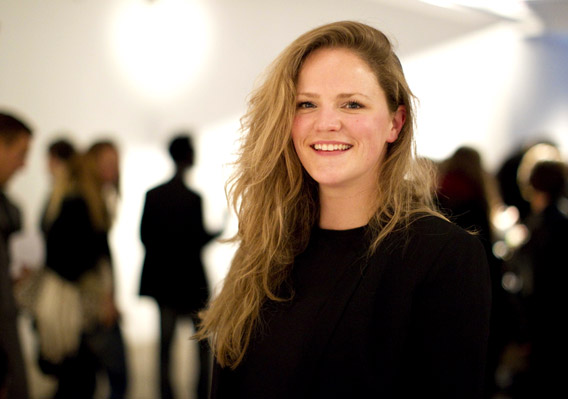
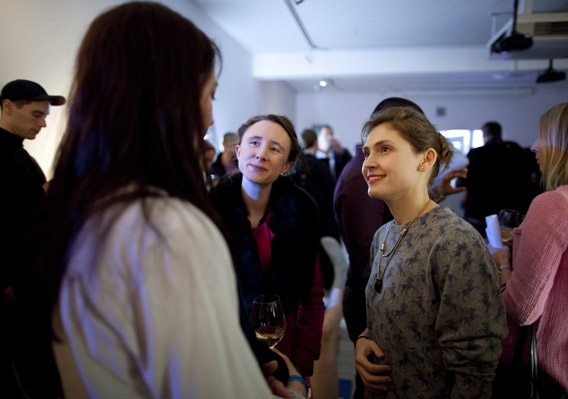
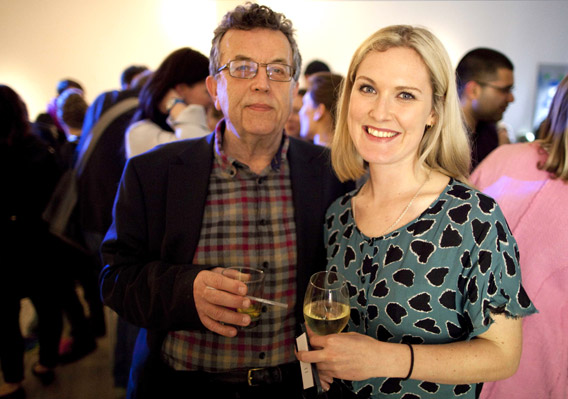
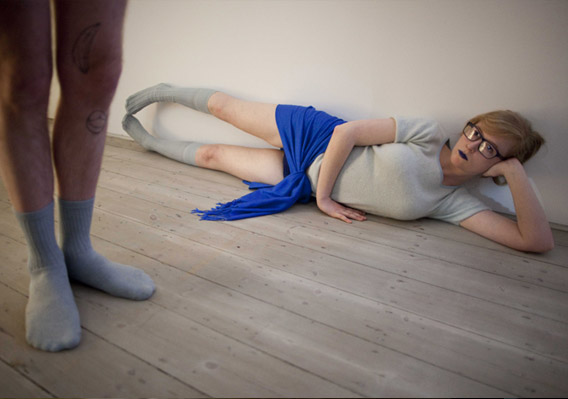
GRAD opened its doors to press, guests and exhibiting artists to celebrate GRAD’s first contemporary art exhibition. Guests were treated to a new performance from artist Paul Kindersley, whose nonchalant Blue Ballet School stretched, posed and draped themselves throughout the gallery.



